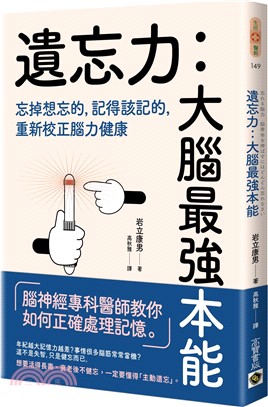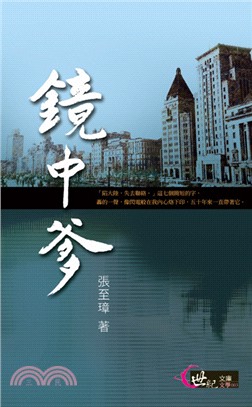Reversib of Chron Degen Disease V1
商品資訊
定價
:NT$ 12025 元優惠價
:90 折 10823 元
若需訂購本書,請電洽客服 02-25006600[分機130、131]。
相關商品
商品簡介
目次
商品簡介
The clinical approaches to the chronic degenerative diseases that drain our resources, and compromise our well-being, have become almost exclusively symptom-focused. The common wisdom is that they are idiopathic with final outcomes to be managed rather than prevented or cured. That they are potentially reversible rarely enters into any discussion between doctor and patient.
A Homeostatic approach to Cure and Prevention for Researchers and Clinicians Working in Toxicology, Immunology, Neurology, and Internal Medicine
Reversibility of Chronic Degenerative Disease and Hypersensitivity, a four-part encyclopedia, offers a much different perspective on chronic degenerative disease, one that disputes the idiopathic label attached to most, as well as the usual fatalistic prognosis. The first volume, Regulating Mechanisms of Chemical Sensitivity, demonstrates that one aspect common to chronic diseases is the disruption of systemic and cellular homeostasis. Environmental pollutants play a large role, along with the contributions of genetic and life style factors, in disrupting the self-regulating mechanisms built into our normally adaptive cells.
"As dyshomeostasis develops in the nervous system, causes should be found and removed before the metabolicinduced tissue changes take place and cause autonomous, irreversible fixednamed diseases to occur. …Single and multiple chemicals in various doses either individually and/or in combinations can cause individual or multiorgan dysfunction of the endocrine system. The astute clinician must be aware of these factors in order to help the patient with hypersensitivity and/or chronic degenerative disease."Chapter 2
Drawing on a vast amount of data and clinical cases attended to by the authors in their own medical practices, this volume examines the complex relation that environmental pollution has with chronic degenerative diseases. It considers its impact on the body’s vast communication networks and what excessive overload does to homeostatic mechanisms.
The authors factor in both general and specific environmental loads and how they alter and trigger genetic and non-genetic responses. Volume 1 begins with an overview of the physiologic basis of homeostasis, exploring various ways that the body deals with toxins and the networks it uses to communicate news of assault and makes provisions for adaptation. The text delves into the connective tissue matrix and considers vascular, neural, endocrine, and immune system responses to a variety of noxious assaults.
"Both innate and acquired immunity can be and are altered in individuals with chemical sensitivity and chronic degenerative disease. …With pollutant overload changes can occur in the lymphatic channels, the lymph nodes, and lymph node egress as well as the lymphatic cells. Changes in mucosal function and the effects of the autonomic nervous system are evident with environmental pollutant overload." Chapter 3
Written by two very knowledgeable clinicians, it brings together research of the highest caliber and provides extensive discussions involving sophisticated biochemical, endocrine, and neural science. The text provides clinicians with the knowledge to understand the triggering and processes of degenerative diseases, so that they might develop more efficient treatment and prevention plans. The book also supplies the knowledge and perspective that can lead research to more effective treatments.
"The ground regulation system consisting of the connective tissue matrix, fibroblast, macrophages, mast cell, leukocyte, end capillary vessel and autonomic nerves, is a global information system for regulating the dynamics of homeostasis in the body. …One’s knowledge of this process must be the guide to move through the onset of early end-stage disease and, eventually, see the manifestations to fixed-named autonomous diseases. It is this knowledge that offers us the greatest potential … for preventing and reversing early homeostatic dysfunction." Chapter 1
A Homeostatic approach to Cure and Prevention for Researchers and Clinicians Working in Toxicology, Immunology, Neurology, and Internal Medicine
Reversibility of Chronic Degenerative Disease and Hypersensitivity, a four-part encyclopedia, offers a much different perspective on chronic degenerative disease, one that disputes the idiopathic label attached to most, as well as the usual fatalistic prognosis. The first volume, Regulating Mechanisms of Chemical Sensitivity, demonstrates that one aspect common to chronic diseases is the disruption of systemic and cellular homeostasis. Environmental pollutants play a large role, along with the contributions of genetic and life style factors, in disrupting the self-regulating mechanisms built into our normally adaptive cells.
"As dyshomeostasis develops in the nervous system, causes should be found and removed before the metabolicinduced tissue changes take place and cause autonomous, irreversible fixednamed diseases to occur. …Single and multiple chemicals in various doses either individually and/or in combinations can cause individual or multiorgan dysfunction of the endocrine system. The astute clinician must be aware of these factors in order to help the patient with hypersensitivity and/or chronic degenerative disease."Chapter 2
Drawing on a vast amount of data and clinical cases attended to by the authors in their own medical practices, this volume examines the complex relation that environmental pollution has with chronic degenerative diseases. It considers its impact on the body’s vast communication networks and what excessive overload does to homeostatic mechanisms.
The authors factor in both general and specific environmental loads and how they alter and trigger genetic and non-genetic responses. Volume 1 begins with an overview of the physiologic basis of homeostasis, exploring various ways that the body deals with toxins and the networks it uses to communicate news of assault and makes provisions for adaptation. The text delves into the connective tissue matrix and considers vascular, neural, endocrine, and immune system responses to a variety of noxious assaults.
"Both innate and acquired immunity can be and are altered in individuals with chemical sensitivity and chronic degenerative disease. …With pollutant overload changes can occur in the lymphatic channels, the lymph nodes, and lymph node egress as well as the lymphatic cells. Changes in mucosal function and the effects of the autonomic nervous system are evident with environmental pollutant overload." Chapter 3
Written by two very knowledgeable clinicians, it brings together research of the highest caliber and provides extensive discussions involving sophisticated biochemical, endocrine, and neural science. The text provides clinicians with the knowledge to understand the triggering and processes of degenerative diseases, so that they might develop more efficient treatment and prevention plans. The book also supplies the knowledge and perspective that can lead research to more effective treatments.
"The ground regulation system consisting of the connective tissue matrix, fibroblast, macrophages, mast cell, leukocyte, end capillary vessel and autonomic nerves, is a global information system for regulating the dynamics of homeostasis in the body. …One’s knowledge of this process must be the guide to move through the onset of early end-stage disease and, eventually, see the manifestations to fixed-named autonomous diseases. It is this knowledge that offers us the greatest potential … for preventing and reversing early homeostatic dysfunction." Chapter 1
目次
Chapter 1 The Physiologic Basis of HomeostasisIntroductionOverview of the Dynamics of Noxious Incitant Entry and Fate The Nature of the Incitant Stimulus The Nature of the Body’s Homeostatic Response The Nature of Information Intake and Distribution Automating the Body—Energy The Clinical Signs and Symptoms after Chronic Noxious Incitant EntryThe Body’s Communication System—The Ground Regulation System Anatomical Categories Used in Communication for Regulating Homeostatic Mechanism Skin and Mucous Membranes Connective Tissue Matrix Mechanical Support System (Support Structure) Communication System Properties Connective Tissue and Electromagnetic Energy Molecular Sieve Latent Free Radical Response Vascular Function—Homeostasis Diffusion Vascular Sieve Microcirculation Vascular Tone Lymphatics Intravascular Content Cells Plasma Proteins Plasma Lipids Neurological Aspects of HomeostasisPollutant Entry and the Body’s Homeostatic Response to and Fate of the Noxious Stimuli Total Environmental Load Total Body Load The Local Receptors Local Homeostatic Responses and Information Reception Matrix Receptor Adjustment Responses Local Cell and Matrix Reactions for the Adjustment Response Regional Homeostatic Adjustment Central Homeostasic Adjustment Principles and Facts about Adjustment Responses Defense System Redox System Latency The Early Defense Mechanism Tissue Response to Local Entry (Initially Sub Inflammatory) Immune Response Nonimmune Detoxification in Relation to Homeostasis and the Defense Mechanism Repair Mechanism—Healing The Nonspecific Mesenchyme Reaction Rate of Enzyme and Nutrient Deficiency
Homeostatic Dysfunction Leading to a Disordered Homeostatic Response Periodic Response Aperiodic ResponseThe Specific Mechanisms of Inflammation and Function of Neutrophils and Macrophages Proinflammatory Cytokines Interleukin-6Neurological System Connection with the Connective Tissue Matrix and InflammationSummaryReferences
AMPLIFICATION SYSTEMS: NEUROLOGICAL, IMMUNE, AND ENDOCRINE
Chapter 2 Nervous SystemIntroduction Linear and Biphasic Effects of Noxious Stimuli EntryReceptorsAutonomic Nervous System Anatomy and Physiology of the Peripheral Autonomic Nervous System Central Connection of the Autonomic Nervous System with the Hypothalamus Reflex Pathways Dysfunction of the Autonomic Nervous System Denervation Supersensitivity Law of Denervation Denervation and Spondylosis: Neuropathic Pain Neurally Mediated Hypotension and Tachycardia Neuromuscular Hypotension and Chronic Fatigue Reflex Sympathetic Dystrophy (Causalgia)Pollutant Injury to the EyePollutant Injury to the Nervous System of the EyeCranial NervesAutonomic NervesNeurogenic Vascular Responses to Pollutant StimuliPathogenesis of Neuroimmunological Mediators (Neuropeptide Triggering by Noxious Stimuli)The Acupuncture Energy Flow System (AES)NAETVoluntary Central Nervous SystemNoxious Injury to the Blood-Brain BarrierNoxious Injury after Penetration of the Blood-Brain BarrierGeneral Principles of Neuronal PhysiologyPrinciples of Response after Toxic ExposureReversibility vs. Irreversibility of Cell Damage after Pollutant Exposure
Mechanism of Acute Central Nervous System InjuryNeurological Effects of Toxic ChemicalsFixed-Named DiseaseToxic NeuropathySummaryReferences
Chapter 3 Immune SystemIntroductionProperties of Entering Noxious Excitants Stem CellsLymph Nodes, Lymphatic Organs, and the Lymphatic System Development of Lymphatic Channels and LymphocytesRegionalization of the Immune Response by Lymphatic Tissue Nodes and Channels after Mucosal Entry Mucosa Associated Lymphoid Tissue (MALT); Nasal Associated Lymphoid Tissue (NALT); Bronchial Associated Lymphoid Tissue (BALT); Gut Associated Lymphoid Tissue (GALT)Neuroimmune RegulationThe Clinical Implications of Food and Chemical Sensitivity in Relation to the Autonomic Nervous System and Immune SystemImmunity Innate Immunity Transition to Innate and Humoral Immunity in the Newborn and Infant Acquired ImmunityLymphocytes The T-lymphocytes General Intrinsic MechanismsB-LymphocytesOnset of Antibodies Classes of Antibodies Inflammatory Effects Clinical Regulation of the Immune System The Cell Cycle Abnormal Cell Cycle Progression in Patients with Chronic Fatigue Syndrome (CFS) Cell Cycle and Cancer AutoimmunityFailure of the Tolerance Mechanism Causes Autoimmune DiseasesAutogenous Lymphocytic Factor (ALF)Cell DeathAllergy and HypersensitivityAging and the Immune SystemSummaryReferences
Chapter 4 Endocrine SystemIntroductionIntegrated PhysiologyPituitary Gland Pollutant Effects on the Nervous System of the Pituitary Gland Pollutant Effects on the Physiology of the Pituitary Growth HormonePineal GlandNeuroendocrine System (Paraganglia, Paraneuron) Neuroendocrine Phenotype Biosynthetic Profile Secretory Granules Specialization of Neuroendocrine Cells Topography of Neuroendocrine Cell Subsets Branchiomeric Group Intravagal Neuroendocrine Cells Visceral-Autonomic Paraganglion Cells Genitourinary Paraganglion Cells Paragangliomas Clinical Manifestations of Neuroendocrine StimulationAdrenal Glands Physiology of the Dynamics of Homeostasis and Dyshomeostasis in the Adrenal Glands Clinical Picture of Pollutant Injury and Adrenal Dysfunction Hyperadrenalism Adrenal Insufficiency/HypoadrenalismParathyroid GlandOvary Organization/Activation Hypothesis Male Homosexuality Sexual DysfunctionUterus and Tubes Premenstrual Syndrome Vasculitis of the Reproductive System Endometriosis Spontaneous Abortion Hormones The Influence of Toxics on Hormonal Homeostasis PCBs Pesticides/Herbicides Menopause DysfunctionVagina and VulvaTestes and Seminal Vesicles Mechanisms of Action and Fetal Vulnerability Hormones and Neurobehavioral Effect Beyond Endocrine Disruption Implications and Ongoing Activities Exogenous Estrogens Phytoestrogens Estrogens in Milk Estrogenic Chemicals Sertoli Cell Number and Sperm OutputThyroid Physiology and Pathophysiology Agents Acting Directly on the Thyroid
Class I Class II Class III Class IV Class V
Agents Acting Indirectly on the Thyroid General Properties, Distribution, and Epidemiology Sulfurated Organics Thiocyanate (SCN), Isothiocyanates, and Thioglycosides (Goitrin) Aliphatic Disulfides Polyphenols Phenolic and Phenolic-Carboxylic Derivatives 2,4-DNP Phthalate Esters and Phthalic Acid Derivatives: DHBAs PCBs and PBBs PAH, 3,4,-BaP, MCA, and 7,12-DMBASummaryReferences
Homeostatic Dysfunction Leading to a Disordered Homeostatic Response Periodic Response Aperiodic ResponseThe Specific Mechanisms of Inflammation and Function of Neutrophils and Macrophages Proinflammatory Cytokines Interleukin-6Neurological System Connection with the Connective Tissue Matrix and InflammationSummaryReferences
AMPLIFICATION SYSTEMS: NEUROLOGICAL, IMMUNE, AND ENDOCRINE
Chapter 2 Nervous SystemIntroduction Linear and Biphasic Effects of Noxious Stimuli EntryReceptorsAutonomic Nervous System Anatomy and Physiology of the Peripheral Autonomic Nervous System Central Connection of the Autonomic Nervous System with the Hypothalamus Reflex Pathways Dysfunction of the Autonomic Nervous System Denervation Supersensitivity Law of Denervation Denervation and Spondylosis: Neuropathic Pain Neurally Mediated Hypotension and Tachycardia Neuromuscular Hypotension and Chronic Fatigue Reflex Sympathetic Dystrophy (Causalgia)Pollutant Injury to the EyePollutant Injury to the Nervous System of the EyeCranial NervesAutonomic NervesNeurogenic Vascular Responses to Pollutant StimuliPathogenesis of Neuroimmunological Mediators (Neuropeptide Triggering by Noxious Stimuli)The Acupuncture Energy Flow System (AES)NAETVoluntary Central Nervous SystemNoxious Injury to the Blood-Brain BarrierNoxious Injury after Penetration of the Blood-Brain BarrierGeneral Principles of Neuronal PhysiologyPrinciples of Response after Toxic ExposureReversibility vs. Irreversibility of Cell Damage after Pollutant Exposure
Mechanism of Acute Central Nervous System InjuryNeurological Effects of Toxic ChemicalsFixed-Named DiseaseToxic NeuropathySummaryReferences
Chapter 3 Immune SystemIntroductionProperties of Entering Noxious Excitants Stem CellsLymph Nodes, Lymphatic Organs, and the Lymphatic System Development of Lymphatic Channels and LymphocytesRegionalization of the Immune Response by Lymphatic Tissue Nodes and Channels after Mucosal Entry Mucosa Associated Lymphoid Tissue (MALT); Nasal Associated Lymphoid Tissue (NALT); Bronchial Associated Lymphoid Tissue (BALT); Gut Associated Lymphoid Tissue (GALT)Neuroimmune RegulationThe Clinical Implications of Food and Chemical Sensitivity in Relation to the Autonomic Nervous System and Immune SystemImmunity Innate Immunity Transition to Innate and Humoral Immunity in the Newborn and Infant Acquired ImmunityLymphocytes The T-lymphocytes General Intrinsic MechanismsB-LymphocytesOnset of Antibodies Classes of Antibodies Inflammatory Effects Clinical Regulation of the Immune System The Cell Cycle Abnormal Cell Cycle Progression in Patients with Chronic Fatigue Syndrome (CFS) Cell Cycle and Cancer AutoimmunityFailure of the Tolerance Mechanism Causes Autoimmune DiseasesAutogenous Lymphocytic Factor (ALF)Cell DeathAllergy and HypersensitivityAging and the Immune SystemSummaryReferences
Chapter 4 Endocrine SystemIntroductionIntegrated PhysiologyPituitary Gland Pollutant Effects on the Nervous System of the Pituitary Gland Pollutant Effects on the Physiology of the Pituitary Growth HormonePineal GlandNeuroendocrine System (Paraganglia, Paraneuron) Neuroendocrine Phenotype Biosynthetic Profile Secretory Granules Specialization of Neuroendocrine Cells Topography of Neuroendocrine Cell Subsets Branchiomeric Group Intravagal Neuroendocrine Cells Visceral-Autonomic Paraganglion Cells Genitourinary Paraganglion Cells Paragangliomas Clinical Manifestations of Neuroendocrine StimulationAdrenal Glands Physiology of the Dynamics of Homeostasis and Dyshomeostasis in the Adrenal Glands Clinical Picture of Pollutant Injury and Adrenal Dysfunction Hyperadrenalism Adrenal Insufficiency/HypoadrenalismParathyroid GlandOvary Organization/Activation Hypothesis Male Homosexuality Sexual DysfunctionUterus and Tubes Premenstrual Syndrome Vasculitis of the Reproductive System Endometriosis Spontaneous Abortion Hormones The Influence of Toxics on Hormonal Homeostasis PCBs Pesticides/Herbicides Menopause DysfunctionVagina and VulvaTestes and Seminal Vesicles Mechanisms of Action and Fetal Vulnerability Hormones and Neurobehavioral Effect Beyond Endocrine Disruption Implications and Ongoing Activities Exogenous Estrogens Phytoestrogens Estrogens in Milk Estrogenic Chemicals Sertoli Cell Number and Sperm OutputThyroid Physiology and Pathophysiology Agents Acting Directly on the Thyroid
Class I Class II Class III Class IV Class V
Agents Acting Indirectly on the Thyroid General Properties, Distribution, and Epidemiology Sulfurated Organics Thiocyanate (SCN), Isothiocyanates, and Thioglycosides (Goitrin) Aliphatic Disulfides Polyphenols Phenolic and Phenolic-Carboxylic Derivatives 2,4-DNP Phthalate Esters and Phthalic Acid Derivatives: DHBAs PCBs and PBBs PAH, 3,4,-BaP, MCA, and 7,12-DMBASummaryReferences
主題書展
更多
主題書展
更多書展本週66折
您曾經瀏覽過的商品
購物須知
外文書商品之書封,為出版社提供之樣本。實際出貨商品,以出版社所提供之現有版本為主。部份書籍,因出版社供應狀況特殊,匯率將依實際狀況做調整。
無庫存之商品,在您完成訂單程序之後,將以空運的方式為你下單調貨。為了縮短等待的時間,建議您將外文書與其他商品分開下單,以獲得最快的取貨速度,平均調貨時間為1~2個月。
為了保護您的權益,「三民網路書店」提供會員七日商品鑑賞期(收到商品為起始日)。
若要辦理退貨,請在商品鑑賞期內寄回,且商品必須是全新狀態與完整包裝(商品、附件、發票、隨貨贈品等)否則恕不接受退貨。






















![漂鳥集[中英雙語版]](https://cdnec.sanmin.com.tw/product_images/957/957146403.jpg)
